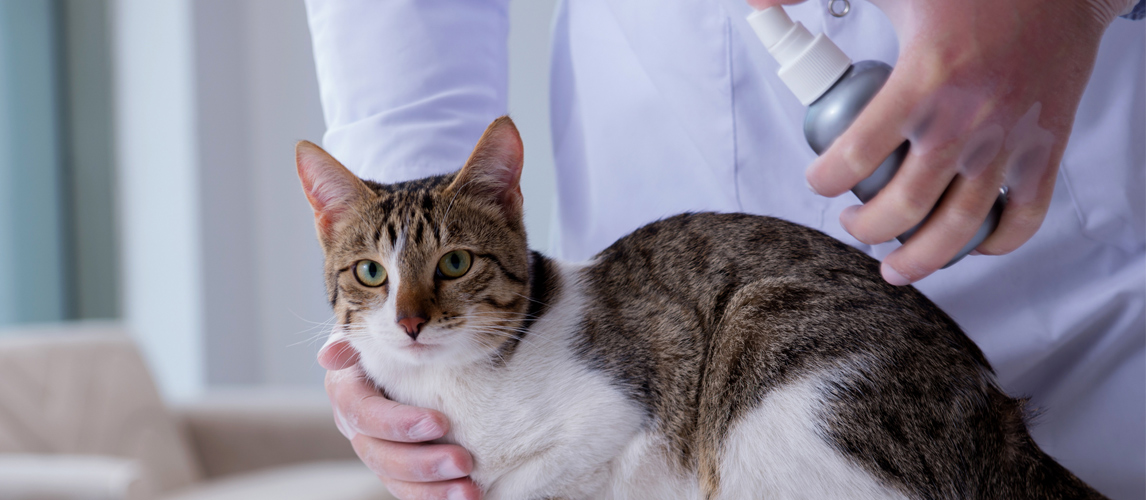Dogs are a natural magnet for ticks. This is what makes them very susceptible to many tick-borne diseases like Rocky Mountain spotted fever, Ehrlichia, and Lyme disease. However, just because ticks have a much greater tendency to attach to canines doesn’t necessarily mean that cats are already free from such tick-borne infections, especially Lyme disease. While uncommon, cats, too can contract Lyme disease causing lameness and a host of other symptoms. If left alone there is a possibility that this will lead to inflammation of the nephrons of the kidneys, resulting in kidney failure. It is best to learn more about Lyme disease in cats if you want to save your feline from this particular infection.
What Causes Feline Lyme Disease?
Ticks do not cause Lyme disease whether it is in cats or in dogs. These spider-like creatures are merely the vessels upon which the microorganism that causes the infection to be transmitted from one host to another. Borrelia burgdorferi is a spirochete type of bacteria that are characterized by a distinct helically coiled shape resembling a corkscrew. This allows them to move through tissues with greater efficiency.
When ticks belonging to the genus Ixodes bite a host with an ongoing Lyme disease, the bacteria are taken up by the tick and reside in the tick’s midgut. When ticks bite another mammal, say cats, Borrelia is again transferred to the next host. It should be understood that the bacteria can only be transmitted through the bite of a tick. As such, if an adult tick already has the bacteria, it cannot pass them to its eggs. Rather, the tick larvae will have to feed on the blood of a host with the Borrelia burgdorferi.

In the US, the ticks that mostly carry the Borrelia spirochete are the black-legged ticks, also known as the deer tick in the southern, Midwestern, and northern regions of the country. Its west coast counterpart is the Western black-legged tick. These ticks are most active in the warmer months, typically beginning spring. It is also during this time of the year when the possibility of transmitting Borrelia burgdorferi across species is high.
While Lyme disease in cats is quite uncommon, your cat will still be especially vulnerable to ticks once it ventures outside the home. Ticks are present even in backyards since they can be carried by other animals such as rodents, squirrels, and other critters that may stray in our yards. Ticks can be removed from their attachment when these animals scratch themselves. And when your cat ventures into these areas there’s a possibility that these ticks will also latch onto your feline friend’s skin.
A good thing to remember is that ticks need to latch onto your cat for at least 18 hours for them to effectively transmit Borrelia burgdorferi from their gut to your cat’s blood. That said, you should start inspecting your cat for any sign of tick infestation right after its adventure outdoors.
What Are the Clinical Manifestations of Lyme Disease in Cats?
The majority of cats don’t show any symptoms of Lyme disease. However, felines that may have the infection often present with a kind of lameness that usually lasts between 3 and 4 days which can then recur in several days or a few weeks later. With the recurrence of the lameness, the other leg is often affected giving the disease its characteristic ‘shifting-leg lameness’ sign. What this simply means is that one leg will be lame for about 3 to 4 days then everything is back to normal. Count a few days or even weeks and the other leg will start to show lameness, again for another 3 to 4 days.
The lameness in the cat’s leg is attributed to the inflammatory changes that are triggered by Borrelia burgdorferi in the joints leading to irritation, swelling, and pain. An increase in local temperature may also be noted.
It has been observed that cats that develop a more serious form of Lyme disease often have their glomerulus infected by Borrelia burgdorferi. The glomerulus is that part of the kidney cell that filters blood to form urine. When this is inflamed it is known as glomerulonephritis and can adversely affect the ability of the kidneys to produce urine. If the infection is not treated immediately, there’s a chance that the cat’s kidneys will start to fail. This can lead to the buildup of fluid in both the abdomen and other tissues leading to anasarca and edema, respectively. Weight loss and lack of appetite may ensue together with diarrhea and vomiting.
Lameness and glomerulonephritis are not the only known manifestations associated with feline Lyme disease. Your cat may also walk rather stiffly with its back acutely arched as if it is ready for a fight. Your feline friend may also display hypersensitivity to touch; it may be jumpy with the mere touch of its fur. It is also possible to see difficulty breathing and fever especially in cases where the joints are severely inflamed. Lymph nodes may also be swollen especially near the site of the tick bite.
There have been reports of heart block occurring in cats with serious Lyme disease. Complications of the nervous system have also been reported, but these are quite rare.
How Is Lyme Disease in Cats Diagnosed?
Since the principal manifestation of Lyme disease is centered on the joints, veterinarians should be able to make a very accurate differential diagnosis ruling out feline arthritis as the cause of the lameness. Other conditions that will have to be ruled out include traumatic injuries to the joints and their surrounding tissues as well as immune-mediated disorders. This is very crucial since the establishment of Lyme disease as the principal cause of the arthritis-like symptoms will help define the treatment.
Since Lyme disease is an infection, veterinarians can request for a series of laboratory examinations that include the cat’s blood chemistry, complete blood count, and an analysis of the cat’s urine. Specifically, vets will be looking for indications of bacterial infection such as elevated white blood cell counts or even the presence of the bacteria in the blood or in the urine itself. In some cases where the lameness on the cat is severe, vets can draw fluid from the joints and have this examined under the microscope to check for the presence of spirochetes and other possible causes of joint inflammation.
An x-ray of the cat’s joints can also help provide a better picture of the degree of injury or damage to the joint capsule.
A comprehensive health history of your cat is important especially the different signs and symptoms that were observed, when these manifestations first started, how long they occurred, and what treatments were applied to manage such symptoms. Equally important is the identification of the tick bite as well as other signs of possible tick infestation. The areas where the cat may have ventured into are also taken into consideration.

How Can It Be Treated?
Treating Lyme disease in cats is very straightforward. Once a determination that the cat has Lyme disease is made, antibiotic treatment can be initiated immediately. More often than not, doxycycline for cats can be initiated, although it is not unusual that vets may give cefuroxime or even amoxicillin instead. For more severe Lyme disease in cats, vets may opt for penicillin or even ceftriaxone. If the cat is not responsive to these antibiotics, erythromycin, azithromycin, or clarithromycin or any other appropriate macrolide antibiotic may be administered. It is important to note that only FDA-approved antibiotics for cats should be used in the management of feline Lyme disease.
In addition to antibiotic therapy, symptomatic treatment may also be administered such as antiemetics for vomiting, analgesics for pain, and anti-inflammatories for swelling, among others. Usually, joint inflammation in feline Lyme disease resolves within the first 3 to 5 days after initiation of antibiotic therapy. If the symptoms have not improved by then, veterinarians should consider other possible causes of the lameness as this may no longer be due to the effects of Borrelia burgdorferi.
Spirochetes are very hardy bacteria. As such, the treatment for feline Lyme disease usually takes a month to complete. Most bacterial antibiotic therapies are good for 2 weeks, treating Lyme disease requires a full 4 weeks. As such it is critical to support the convalescing cat by keeping it warm and dry while also controlling its activities. Complete bed rest should be instituted if at all possible on your pet.
Can It Be Prevented?
Since Lyme disease is spread by ticks, it can be easily prevented by manually removing ticks from the skin of cats. Remember there is an 18-hour window of opportunity from the time ticks first bite until the actual transmission of Borrelia burgdorferi into the cat’s bloodstream. At any rate, using flea collars that are also effective against ticks can help, too. Tick sprays and preventatives such as topical spot-ons can also help. Daily grooming can help remove ticks from cats’ bodies before they get infected.
Lyme disease in cats is rare. However, knowing what causes the disease, its manifestations, how it is diagnosed, and how the disease is treated can help you better prepare for any eventuality.
Related Post: Best Cat Brush
Sources:
- S K Mishra, Papillitis, Lyme Disease, And Cats, Springer Nature Limited
- Lyme Disease in Dogs And Cats, CAB International
- Lyme disease: A Pet Owner’s Guide, American Veterinary Medical Association
- What You Need to Know About Lyme Disease, The ASPCA






